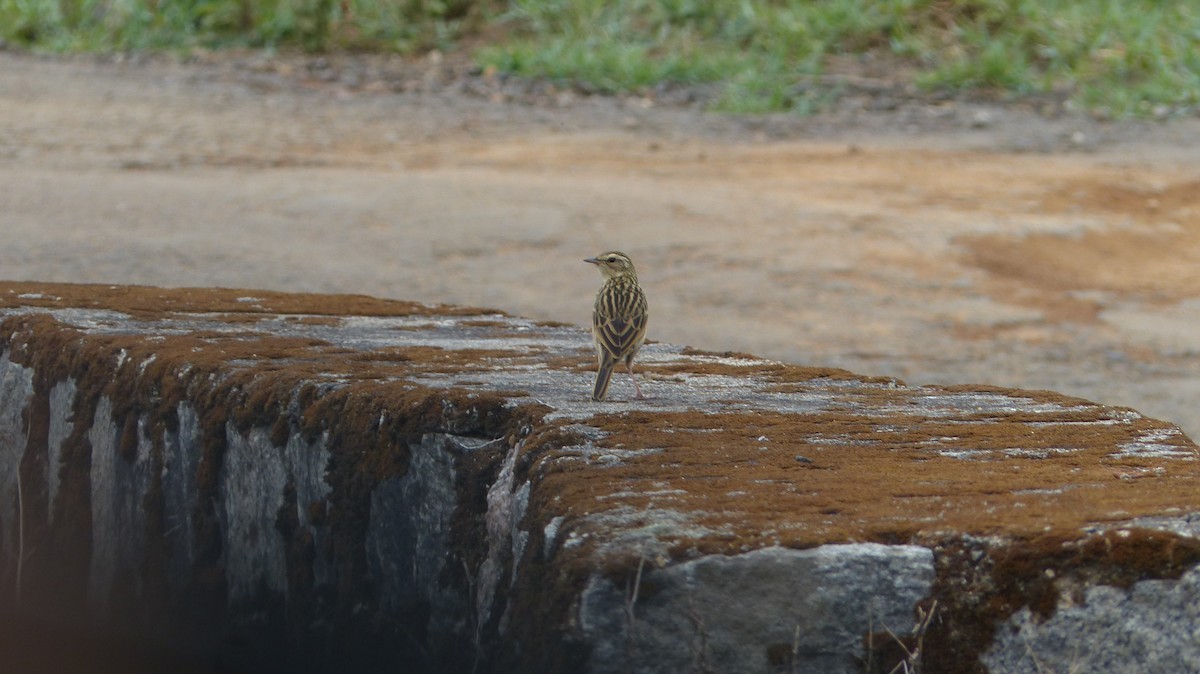Nilgiri Pipit
A species of Pipits Scientific name : Anthus nilghiriensis Genus : Pipits
Nilgiri Pipit, A species of Pipits
Botanical name: Anthus nilghiriensis
Genus: Pipits
Content
Description General Info
 Photo By Ashwin Viswanathan
Photo By Ashwin Viswanathan Description
The Nilgiri pipit is about 12.6–14 centimetres (5.0–5.5 in) long and is richly coloured, has dark lores, a buff supercilium and throat. It lacks any malar stripes. The flanks, breast and sides of neck are brighter buff and that bill is completely dark. The crown is heavily streaked in black as are the upperparts. The outer tail feathers are also buff coloured and there is no white in the plumage. The streaking on the breast is fine and it extends along the flanks. The first four primaries of the wing are almost equal and the fifth is about 1–2 mm shorter. The primaries from the second to the fifth are emarginate. The tail feathers are pointed and the second outer feather has a tapering triangle along the shaft and the third with a small triangle at the tip. Abnormal albino individuals have been reported. 
Size
18 cm
Nest Placement
Ground
Feeding Habits
Nilgiri Pipit primarily forages for insects within short grasses. Disturbances cause it to retreat to the safety of nearby bushes or trees.
Habitat
The nilgiri Pipit is typically found in upland grasslands, preferring open, grassy, and rocky hilltops with short grass. This species also occupies coffee plantations. Broadly, it is indigenous to highland regions characterized by montane grassland ecosystems.
Dite type
Insectivorous
General Info
Feeding Habits
Bird food type
Behavior
Nilgiri pipits are found singly or in pairs. When disturbed they usually fly into a low bush or tree. They breed in summer from April to July. The nest is a cup of grass in short grass. The clutch consists of two to three grey brown speckled eggs. They feed on grass seeds and insects with invertebrates becoming more important during the breeding season. 
Distribution Area
The Nilgiri pipit is closely associated with short montane grasslands interspersed with marshy grounds and small streams mostly in hill slopes above 1,000 metres (3,300 ft) in the Ponmudi hills and above 1,500 metres (4,900 ft) in the Nilgiris, Palani and High Ranges. They have also been claimed to occur in the Kalakkad Mundanthurai Tiger Reserve but a 2014 study suggests that the species is restricted to the high altitude grassy peaks of the Nilgiris and the Anamalais. Museum specimens exist from the Palani ranges but habitat changes may have led to its reduction or extirpation as the species was not found in later surveys. 
Species Status
The world population is estimated to be about 4000 birds based on a density estimate of about 0.1 birds per hectare in suitable habitat. The grassland habitat is threatened by wattle plantations and the colonization of grasslands by species such as broom (Cytisus scoparius) in the Nilgiris and by fire. 

 Photo By Ashwin Viswanathan
Photo By Ashwin Viswanathan Scientific Classification
Phylum
Chordates Class
Birds Order
Perching birds Family
Wagtails Genus
Pipits Species
Nilgiri Pipit